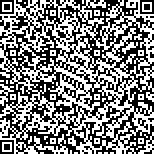| 引用本文: | 俞 帅,张 雁,陈 楠,潘晓霞,欧阳彦,张敏芳,刘少军,马 骏,王 骏.Fabry病致心肌梗死合并心力衰竭病例研究[J].大连医科大学学报,2018,40(3):262-269. |
| |
|
| |
|
|
| 本文已被:浏览 次 下载 次 |

码上扫一扫! |
|
|
| Fabry病致心肌梗死合并心力衰竭病例研究 |
|
俞 帅,张 雁,陈 楠,潘晓霞,欧阳彦,张敏芳,刘少军,马 骏,王 骏
|
|
1.上海市静安区中心医院 心内科,上海 200040;2.上海交通大学附属瑞金医院 肾脏科,上海 200025;3.上海交通大学附属仁济医院 肾脏科,上海 200127;4.复旦大学附属华山医院 肾内科,上海 200040;5.上海市静安区中心医院 肾内科,上海 200040
|
|
| 摘要: |
| 目的 提高对Fabry病致心肌梗死合并心力衰竭的认识及诊治水平。方法 患者,男,61岁,无明显诱因下出现胸闷伴气促,体检发现心脏扩大,查超声心动图示左室肥大伴左右室壁收缩活动减弱,EF 28%。初步诊断:心力衰竭。入院后完善血常规、血液生化(肝肾功能、电解质、血糖血脂)、心肌标志物(心肌酶谱、cTnT)、NT-proBNP、24 h尿蛋白定量、心电图、胸片、超声心动图、肺功能等常规检查。必要时根据病情及检查结果进行肾穿刺活检、冠状动脉造影检查。结果 予以呋塞米、多巴胺、多巴酚丁胺、单硝酸异山梨酯等药物治疗后患者心衰症状仍有反复发作,查肌酐113 μmol/L,cTnT 0.122 ng/mL,NT-proBNP 2808 pg/mL,因患者1月前胸闷为持续性,结合心电图存在动态变化,cTnT异常,行冠脉造影检查示左前降支近段至中段长病变伴钙化,局部血栓形成,最重处狭窄80%,在IVUS指导下行PCI术,术后规律药物治疗,心衰症状缓解。结论 Fabry病累及心脏可表现为肥厚型心肌病(主要为左心室肥厚),传导阻滞,心脏瓣膜病变,快速性心律失常,严重者可导致心力衰竭、心肌梗死,早期诊断、早期治疗可改善Fabry病患者的症状。 |
| 关键词: Fabry病 心肌梗死 心力衰竭 |
| DOI:10.11724/jdmu.2018.03.16 |
| 分类号:R541.9 |
| 基金项目: |
|
| Clinical study of myocardial infarction and heart failure caused by Fabry disease |
|
YU Shuai1, ZHANG Yan2, CHEN Nan3, PAN Xiaoxia3, OUYANG Yan3, ZHANG Minfang4, LIU Shaojun5, MA Jun6, WANG Jun2
|
|
1.Department of Cardiology, Jing'an District Central Hospital of Shanghai, Shanghai 200040;2.Department of Cardiology, Jing'an District Central Hospital of Shanghai, Shanghai 200040, China;3.Department of Nephrology, Institute of Nephrology, Ruijin Hospital, Shanghai Jiao Tong University School of Medicine, Shanghai 200025, China;4.Department of Nephrology, Renji Hospital, Shanghai Jiao Tong University School of Medicine, Shanghai 200127, China;5.Department of Nephrology, Huashan Hospital, Shanghai Fu Dan University, Shanghai 200040, China;6.Department of Nephrology, Jing'an District Central Hospital of Shanghai, Shanghai 200040, China
|
| Abstract: |
| Objective To improve the recognition, diagnosis and treatment of myocardial infarction and heart failure caused by Fabry's disease. Methods A 61-years old male patient presented with chief complaints of chest tightness and shortness of breath without any obvious causes. Physical examination suggested cardiac enlargement. Echocardiography showed left ventricular hypertrophy with decreased left ventricular wall systolic activity and EF 35%. Preliminary diagnosis was heart failure. After admission, the patient had routine examinations including blood routine, blood biochemistry (liver and kidney function, electrolyte, blood glucose and blood lipid), myocardial markers (myocardial enzyme spectrum, cTnT), NT-proBNP, 24 h urine protein, electrocardiogram, Chest X-ray, echocardiography, and lung function. If necessary, renal biopsy and coronary angiography would be performed according to the condition and examination results. Results Although the patient received treatment of furosemide, dopamine, dobutamine and isosorbide mononitrate, his condition did not get better. Blood test revealed Cr 113umol/L, cTnT 0.122ng/ml, and NT-proBNP 2808pg/ml. Reviewing the medical history, the patient complained of persistent chest tightness one month ago. Due to the dynamic changes of electrocardiogram and abnormal cTnT, a coronary arteriography was performed and showed severe stenosis (80%) and calcification of the left anterior descending artery from the proximal portion to mid-portion with local thrombosis. The patient was treated with percutaneous coronary intervention (PCI), IVUS and stent implantation. After PCI, the patient received heart rhythm drug treatment and heart failure symptoms were relieved. Conclusion Cardiac manifestations of Fabry disease are described as left ventricular hypertrophy, conduction abnormalities, valvular dysfunction, and arrhythmia. In end-stage patients, heart failure or myocardial infarction may develop and become the main cause of death. Early recognition and aggressive treatments are critical to reduce mortality. |
| Key words: Fabry disease myocardial infarction heart failure |
|
|
|
|